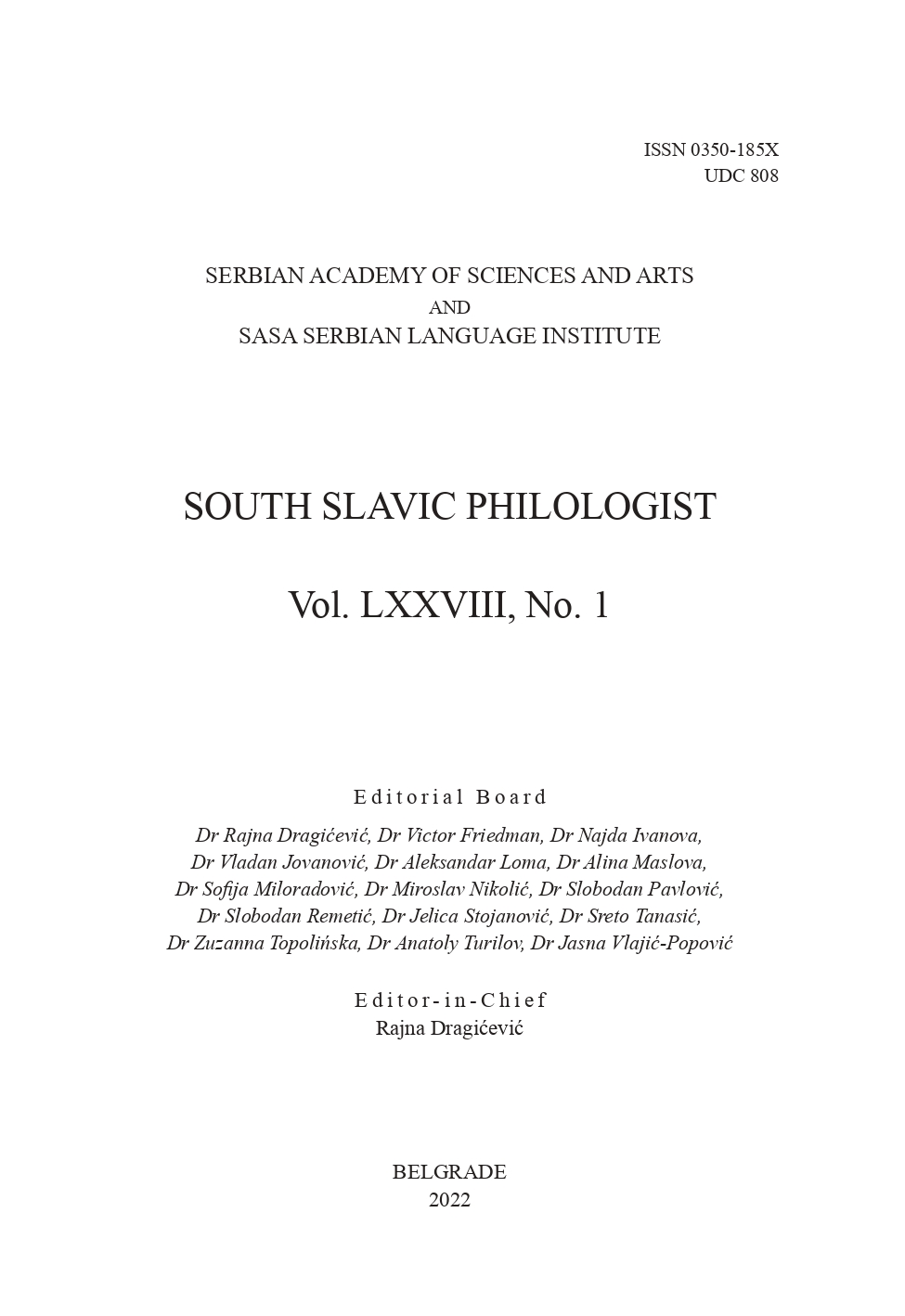О ПРИРОДИ ЗНАЧЕЊА ВЕЗНИКА ДОК КАД ОЗНАЧАВА СУПРОТНОСТ (КОНТРАСТ)
ON THE NATURE OF THE CONJUNCTION DOK (‘WHILE’) DENOTING OPPOSITION (CONTRAST)
Author(s): Duška B. KlikovacSubject(s): Syntax, Semantics, South Slavic Languages, Philology
Published by: Институт за српски језик Српске академије наука и уметности
Keywords: Serbian language; conjunction dok (‘while’); coordinating conjunctions; subordinating conjunctions; pseudo-subordinate clauses; categorization
Summary/Abstract: The article first discusses whether the conjunction dok (‘while’) belongs to the category of coordinating or subordinating conjunctions. The analysis demonstrates that this conjunction possesses some of the properties characterizing the most typical coordinating conjunctions (i.e. it indicates a contrast and the clauses can ‘revolve around’ it), some properties which make it a marginal member of this category (i.e. it cannot coordinate syntactic units other than independent clauses and the part of the second clause which this clause shares with the first clause cannot be omitted from the sentence), but that it also has a feature that the other coordinating conjunctions do not exhibit and which would even place it outside this category (i.e. it can also come before the first clause). Nevertheless, the fact that its position in a sentence can vary without changing the position of the clauses, that is to say, the position of the clauses can change while that of the conjunction remains the same, clearly indicates that this conjunction does not belong to either of them; hence, it is not a subordinating conjunction. This can be inferred from some other features as well – for instance, the predicate of the clause following this conjunction – when referring to the future – can only be used in the Future 2 tense, and not the Future 1. It simultaneously has a strong tendency to come between the two clauses, in which case it is preceded by a pause, i.e. a comma. The conjunction dok thus shows that when it comes to two contrasting categories, membership in one of them can depend not only on the features which are typical of this particular category, but also on those unacceptable to the other one. More generally, this conjunction additionally shows that grammatical classifications, which are essentially based on dichotomies, in some cases do not accurately reflect actual linguistic phenomena. The second part of the article discusses how dok developed the meaning of contrast. In relation to this, pseudo-subordinate temporal dok-clauses are identified, in which dok still refers to simultaneity, but the situation expressed in the dok-clause does not represent the reference point relative to which the event in the main clause can be temporally located; dok then means ‘meanwhile’. The analysis suggests that the separation of the two domains in which this conjunction can be interpreted is pivotal to the development of the meaning of contrast – namely, the temporal domain (when it is interpreted in its temporal sense, i.e. indicating simultaneity) and the domain of comparison (when it is interpreted as adversative). The aforementioned separation is possible in ambiguous examples, where, in addition to the simultaneity of two situations, there is also a contrast – either a contrast between these two situations or between some of their components. It should also be added that, if the conjunction has a temporal meaning, the possible element of contrast is still present; but if its meaning is that of contrast, the temporal component fades completely. Finally, the article provides a possible explanation for why the conjunction dok in particular, unlike the other temporal conjunctions, or other conjunctions for that matter, has developed the potential to denote a contrast as well: it is when two events occur simultaneously that the contrast between them is most noticeable – they are ‘before our eyes’ at the same time.
Journal: Јужнословенски филолог
- Issue Year: 78/2022
- Issue No: 1
- Page Range: 147-166
- Page Count: 20
- Language: Serbian

